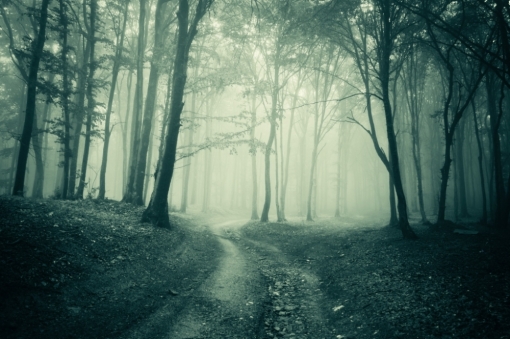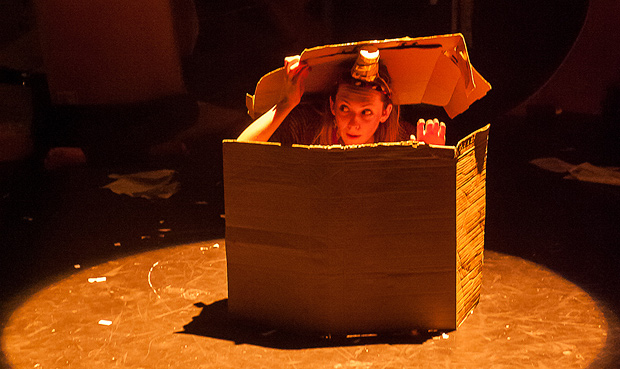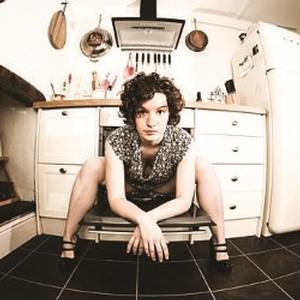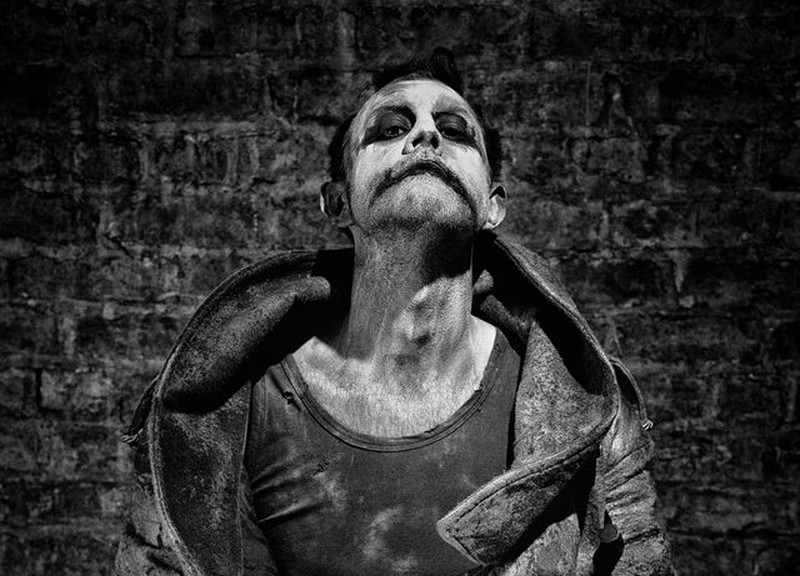‘The numbers on your headphones should match the numbers on your seats.’ There’s a slight air of anxiety as people try to find their seats, which aren’t in numerical order. We notice as we sit that although it is a sell-out show, there is no-one in the seat to either side of us. whole columns are empty. So friends are separated, and we each sit alone with no human contact, staring at a screen. ‘This is your last chance to leave’ warns the screen. We see some photos of a bland hotel room. A bed, two chairs, light fittings, a nondescript ornament or two. The lights dim, we’re in the dark. Total blackout, not even an emergency exit light.
Then the voices start, far away at first, then very close. The person whispering in my ear is called Julie. You have to imagine that with a French accent. Julie. She is apparently taking care of me. We are in a hotel room. There is a conference speech to be written urgently. An ornament is broken – I was dozing but the crash woke me up. Julie is arguing with someone about me. I’m taken into a lift, where she apparently has to bribe the lift operator. Now I’m in a car. The goalposts keep changing. More noises. Other voices, engines running, crunching footsteps, the patter of rain. The rain stops, but the windscreen wipers carry on, regardless. We cut from one place to another. Indoors morphs into outdoors with no clear logic. It’s a film script. It’s a dream.
The thing this show most reminds me of is the experimental drama slot on Radio 3 on Sunday evenings, listened to under the covers. Radio, as we know, is a highly visual medium. The power of words whispered in your ear to conjure images, this is what’s at work here. Sometimes it goes beyond the radio effect, becomes a whole-body visceral experience as the room itself shakes and shudders.
Writer Glen Neath and director David Rosenberg are upfront in their objective to induce a state of shared dreaming in the audience. They stand on the shoulders of many other writers and directors who explore a dream-state of heightened reality chock full of puzzling non-sequiturs. Lynch. Saramago. Kafka. Murakami. Add a dash of Film Noir and French Nouvelle Vague into the mix. Or Nouvelle Vague Film Noir, even. Alphaville, especially. To steal a line from Murakami, Fiction takes us to edge of Kafka’s shore, and leaves us there, pondering. What does it all mean? Everything and nothing.
Fiction is one of a number of theatre-in-the-dark productions at the Edinburgh Fringe – Daniel Clark’s Earfilms is also playing as part of the British Council Showcase, for example. I’d say it’s a growing trend – but then I remember that BAC programmed a whole season of (literally) dark theatre at least a decade ago, possibly two. It’s an ongoing trend – and the advances in technology make for evermore sophisticated manifestations. Rosenberg seems to be making works using binaural headphones his thing. And more than that, his fascination with the Peeping Tom / Rear Window and other voyeuristic / pulp fiction cinematic motifs goes right back to his earlier work with Shunt in shows such as Amato Saltone.
Not for the feint-hearted. Or the claustrophobic.. Someone had to be taken out by an usher with a torch at the show I was in., which was a nice moment of unplanned theatre. Or maybe it always happens, who knows.
A rollercoaster ride of Artaudian theatre of the senses for those who dare.
Goodnight. Sleep tight.
Fiction by David Rosenberg and Glen Neath is presented by Fuel at the British Council Edinburgh Showcase 2015.





